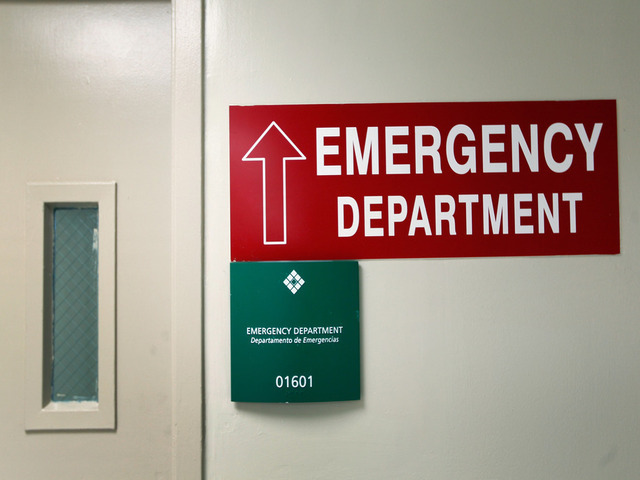CINCINNATI – The region’s largest health system has launched a new partnership to help more patients battling addiction enter treatment programs more easily and quickly.
Mercy Health is teaming with 10 addiction treatment providers across Greater Cincinnati that will offer long-term treatment and recovery options for patients on a nearly on-demand basis.
The providers include: BrightView, City Gospel Mission, Greater Cincinnati Behavioral Health Services, Health Experiences, Joseph House, Margaret Mary Health, Northland/Ridge, Sunrise Treatment Center, Talbert House and Urban Minority Alcoholism and Drug Abuse Outreach Programs.
The partnership comes at a critical time for the region: Overdoses from powerful opioids continue at record rates, with more than 500 deaths potentially linked to the drugs in Hamilton County alone last year.
RELATED: Will 2018 be the year our region beats heroin?
In part, officials involved say, the goal is to help patients avoid the pitfalls that can come when seeking out addiction treatment services, including lengthy waiting lists to be treated, redundant paperwork and medical tests or simply not knowing where to go.
“We all live in this community and we know and see the impacts this epidemic is having,” said Dr. Nav Kang, who leads Mercy’s Behavioral Health Services at its five Cincinnati-based hospitals.
Under the agreement, Mercy will provide short-term, hospital-based detox for patients before transitioning them to one of the outpatient providers for long-term medically assisted treatment and other services.
From there, Mercy and each of the partner agencies will continue to track the patient’s progress.
“So much of this is about continuing to encourage people to have open discussions that help destigmitize addiction,” said Dr. Jeffrey Bill, of Sunrise Treatment Center, which has offices in Bridgetown. “People are not going to come forward to seek treatment if they’re embarrassed or ashamed, so having the clout of a large health care organization like Mercy can really have a lot of influence over how the community thinks about the struggle of addiction.”
Officials at Mercy first considered launching their own suite of long-term treatment options for patients battling opioid addiction.
“What we found in our exploration was that there are a number of great agencies doing great work, so we don’t have to recreate the wheel,” Kang said. “Through collaborating with them we can maximize capacity and better coordinate care for our patients.”
Already, the health system was teaming with several community-based treatment providers, including Brightview and Greater Cincinnati Behavioral Health. The new agreement broadens that relationship, giving patients access to a variety of treatment services at providers spread across the region. The groups are also meeting monthly to share data and best practices and will be measuring outcomes for patients as they move through the programs.
Through a dashboard, the teams are sharing and tracking nearly 30 variables aimed at measuring a patients progress, including intervals of sobriety and barriers that keep a patient from accessing their treatment services
“This is meant to level the playing field for everyone – to get everyone on the same page so that they really understand what’s working and what’s not,” said Dr. Larry Graham, president of Behavioral Health Services at Mercy.

For Mercy, the work is an extension of several efforts already under way to battle the opioid crisis.
More than two years ago, Mercy began conducting regular screenings with patients who came into its Clermont hospital emergency room to identify those battling addiction. For those who screen as being at risk for addiction, a nurse or addiction specialist can refer them for treatment and help them understand their treatment options.
Known as SBIRT, which stands for Screening, Brief Intervention, & Referral to Treatment, Mercy has conducted more than 28,300 screenings that have yielded 1,530 referrals for treatment.
"When you have someone who is addicted to opioids, they've usually burned a lot of bridges in their life with family and friends," said Brian Gray, director of business development for Mercy's Behavioral Health Institute. "They really need someone who can help make that soft handoff while they're in emergency room to help them consider treatment options."
The strategy is vastly different than what has been the typical practice of most emergency departments in the U.S., Gray said.
"What used to happen is someone would overdose on heroin, get revived by Narcan and be sent to the emergency department," Gray said. "The nurses or doctors hook them up to the medical monitor and stabilize them -- maybe the doctor would tell them that, 'You need to do something about your drug problem,' but once they were stable, they were free to go. Instead of letting them walk, we take time to do a brief intervention, and it's making a big difference."
The program is now being rolled out to Mercy’s emergency departments across Ohio and Kentucky, which includes more than 30 facilities that treat nearly 1 million patients a year.
"The hope has been all along that as this process shows success, then we can start changing the culture of the emergency departments so that everyone truly feels that these difficult topics are OK to talk about," Gray said.


